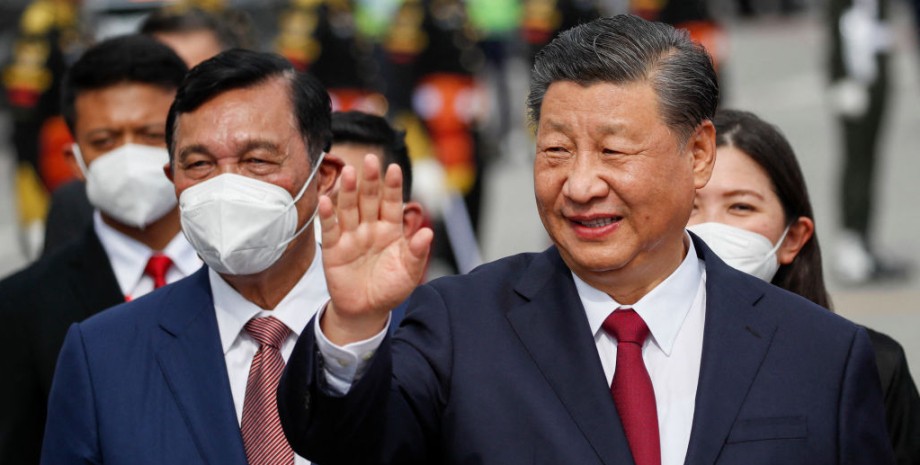
This is a closed area, and tourists are not allowed there. So if you are not a foreign ambassador, then in Zhunnanhanhai you are likely to get. What analogue of the American White House, the Russian Kremlin and the Ukrainian Bank, CNN writes. Zhunnanhanhai in Chinese means "Central and South Sea. " It is a man -made lake in Beijing, located directly west of the forbidden city, which occupies about the same area.
In Chinese media, the term "Zhunnanhai" is used to refer to the highest management of the PRC: for example, "Officially Zhunnanhanhai reported. " On its territory there are man -made lakes, the park, as well as imperial pavilions, temples and modern offices, which since 1950 have formed the governing complex of the ruling Communist Party of China (CCP). This is one of China's most secret places.
It is surrounded by a centuries -old red wall, which has many surveillance chambers, and the territory around diligently patrol the security forces in both civilian and uniforms. For the imperial ancestors of the Chinese leader Si Jinping, this place has performed a slightly different function. In the forbidden city, they ruled, and in Zhunnanhanhai rested. In the pavilions, they arranged receptions, admiring the lakes.
The first ruler to view Zhunnanhanhai as a place for reign, was a widow-imperative Ciss, which has effectively controlled China for almost five decades since 1861. For many years she lived in the hall of ceremonial phoenixes in the garden, which now became the center of political power in China. She died there in 1908. On the small island of Inta, copies of the mythical island of Penlay, where they lived immortal from the Chinese legend, she kept under the arrest of her nephew, Emperor Guanuyu.
Until he died of arsenic poisoning a day before the most giving Empress. After graduating from the Imperial Board of 1912, serious changes took place in Zhunnanhanhai architecture. After the last emperor renounced the throne, the new President of China Yuan Shikai gave him the right to live in the northern part of the forbidden city, and then made Zhunnanyhai headquarters of his new administration. The most noticeable change has affected the two -storey pavilion in the south of the gardens.
The precious moon tower was built by Emperor Tsanglun for his concubine, Muslims from Cinjiang, which was brought to Beijing as a military prey. The concubine looked from the tower to the south, the false mosque and the bazaar, which the emperor specifically built to quench her longing at home. Yuan converted this pavilion to the main entrance to his presidential complex and installed a high guard tower to the east of it. The gates were called Xinhumen, or the Gate of New China.
The gates are now decorated with two red flags and political slogans. And they remain the most prominent part of Zhunnanhanhai. The rest of the complex since 1989 has been strictly closed to the Chinese public. Initially, after the Victory of the Communists in the Civil War in China in 1949, Mao Zedong settled at Villa Schuangin on the fragrant hills, another former imperial garden west of Beijing.
But in the end, he moved to Zhunnanhanhai and began to receive guests in the pavilions of the garden of abundance of benefactors. Recovering Zhunnanhanhai as the center of political power in New China, Mao undertook the reconstruction of the complex to his taste. There appeared a tennis court, a gym, Western -style pools and buildings topped by Chinese eaves.
In 1966, Mao moved from the garden of the abundance of benefactors to a specially built house next to his favorite covered pool, where he received foreign leaders in swimming. For example, Nikita Khrushchev in 1958. Khrushchev was dissatisfied because he could not swim. Most of the following leaders preferred to live a house outside the Zhunnanhai complex.
Dan Xiaopin lived in a house in the inner yard on a nearby lane, adjacent to Beihaya, the "North Sea" of the Lakes Chain in the center of Beijing. Although this is not officially disclosed, it is believed that modern leaders, including Xi Jinping and his predecessors, live in an exclusive closed complex in Jade Spring-Hill, sometimes called the "hind garden" of Chinese politics in Beijing.
The modern complex of Zhunnanhanhai is divided into about two parts: the northern buildings on the bank of the "Middle Lake" are used as a headquarters of the highest executive body of China-the State Council. It is here that foreign dignitaries are allowed. Meanwhile, the CCP headquarters are located around the South Lake, in particular in the Zichen (Hall of Consity Government) and the offices of the Secretary General of the Party (the position now occupied by Xi Jinping).
The Huauzhen Hall, or the cherished compassion, was added to the Imperial Park during the late price dynasty, but then reconstructed it carefully in the early 1950s. There is a large audience hall, as well as many small conference rooms. For decades, the hall served as the main meeting place of China Politburo, a party governing body, which is usually made up of about two dozen members. Today, Zhunnannhan is protected more carefully than ever.
When in 1973 an attachment was made to the adjacent Beijing Hotel, the authorities were in panic, realizing that from the upper floors it was possible to see Zhunnanhai quite easily. Therefore, in the New Careful City urgently built a survey building.
Similarly, in 2018, when the construction of a new highest Beijing building was completed-528-meter tower Citic, known as "CUN"-the national security apparatus of the country, as reported, requisitioned the upper floors because of fears that visitors or residents can spy on Zhongnanhaya. . Recall that China clearly made it clear that Taiwan's admiration is only a matter of time.










All rights reserved IN-Ukraine.info - 2022